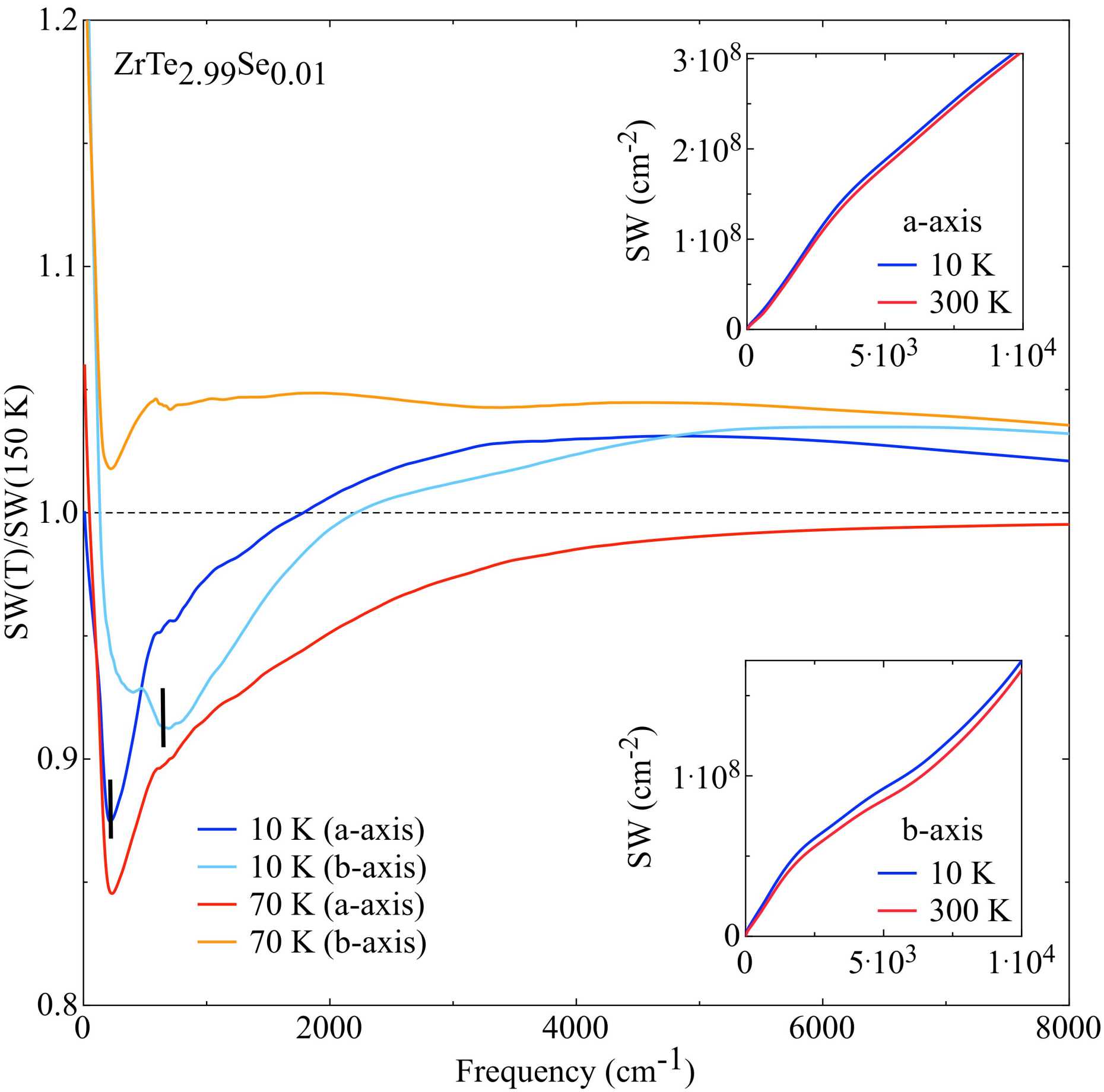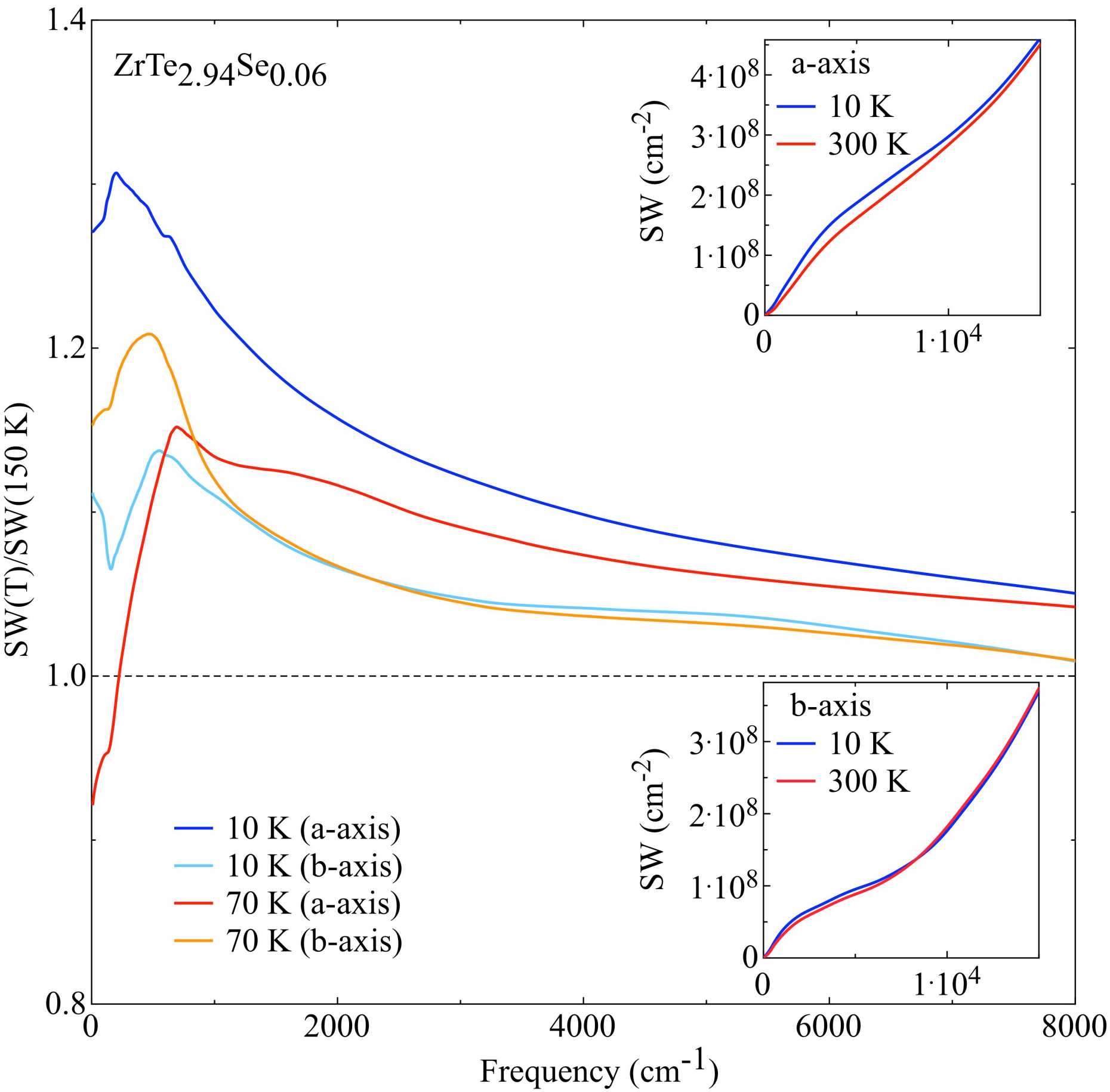Impact of the charge-density-wave state in the electrodynamic response of
ZrTe3-xSex: optical evidence for a pseudogap phase
Broken-symmetry competing states, as CDW and superconductivity, have been widely established in the high-temperature superconducting cuprates, so that the CDW state itself advanced as an important ingredient with respect to the onset of superconductivity and may even be intimately related to its pairing mechanism. For instance, a rather recent combination of resonant x-ray scattering, scanning-tunneling microscopy and angle-resolved photoemission spectroscopy experiments reveals the existence of a generic charge-ordered state in underdoped cuprate families and uncovers its intimate connection and ubiquity with the pseudogap regime.
The 2D transition metal (M) MX2 and MX3 chalcogenides (X stays for S, Se and Te) provide an interesting playground for addressing the CDW state and, with appropriate chemical doping, even its interplay with superconductivity.
We reported on the optical response of ZrTe3-xSex for the x = 0.01 and 0.06 compositions over a broad spectral range and as a function of temperature. While Tc for the superconducting transition is too low (< 4 K) in order to appreciate its direct impact on the optical response, the chosen Se-doping compositions act as model materials, spanning the phase diagram between a compound with a nominal CDW state (x = 0.01, with TCDW ≃ 45 K) and a sample without any long-range charge ordering (x = 0.06). Even though sequel to our previous work on ZrTe3 as well as on Cu- and Ni-doped ZrTe3, the main motivation here is to address the optical fingerprints pertinent to the CDW condensate and the crossover to a regime determined by its fluctuation and/or precursor effects, which all precede superconductivity, along the doping axis of a single compound.

The low-energy spectrum of the Se-doped ZrTe3 is shaped by rather strong electronic absorptions at infrared energy scales. The spectral weight distribution as a function of temperature (Fig. 3.19/20), extracted from σ1(ω), provides evidence for the formation of a pseudogap at the same energy scales at high temperatures along the a-axis for both investigated materials. The picture emerging from these investigations is not surprising and may be considered as a rather generic behavior of genuine CDW materials. Conversely, the novel aspect resides in the persistence of CDW features across the whole phase diagram, even for doping without a nominal CDW transition; an aspect, which was not possible to address and to appreciate in our previous works. Such a pseudogap evolves into a (partial) CDW gap for ZrTe2.99Se0.01, affecting both crystallographic axes at T < TCDW. In ZrTe2.94Se0.06, the pseudogap substantially weakens or totally disappears upon lowering the temperature. This may be consistent with the tendency in these materials to form short range order, uncorrelated CDW segments at higher doping which then crosses over into a coherent CDW state at low doping. Our findings are in broad agreement with conjectures that doping perturbs the long-range phase coherence and induces patches of the CDW condensate. Consequently, the electron scattering mechanism is dominated by local CDW fluctuations also existing outside the phase boundary of the CDW order. We therefore confirm that effects due to the proximity of the CDW broken-symmetry state extend across a great portion of the phase diagram (0 < x < 0.06) and we establish their impact up to temperatures of the order of 100 K. It remains to be seen whether CDW fluctuations could be invoked in the pairing mechanism and thus mediate the onset of superconductivity. Independently of this latter issue, our optical results do bear clear testimony for a pseudogap phase, preceding the onset of superconductivity. Therefore, our conclusions on model materials like the title compounds reinforce the notion that the pseudogap phase is far more generic to phase diagrams with competing broken-symmetry states and not an exclusive feature of cuprates.
